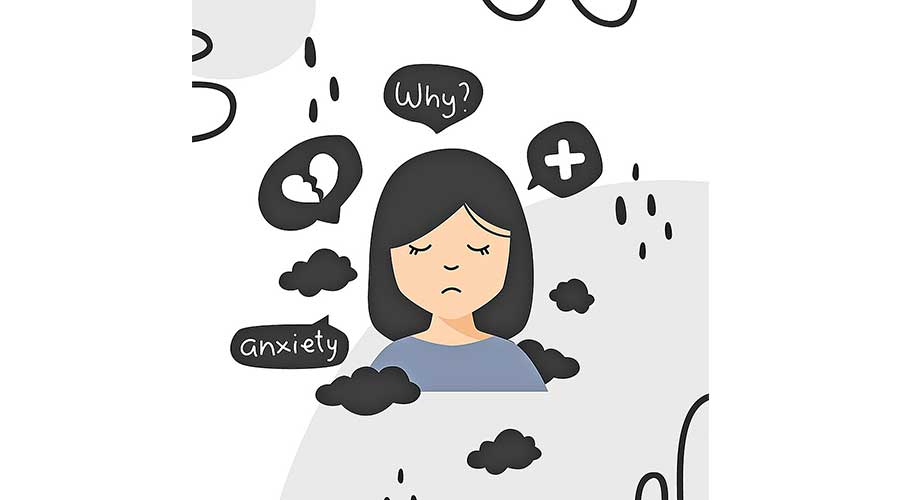Salt therapy – All you need to know
- 24 Feb - 01 Mar, 2024
Stimming is short for "self-stimulation," and it's referred to medically as a "stereotypic" behaviour. Almost all people engage in some self-stimulating behaviours. Look around most waiting rooms or boring meetings. Many people are doodling, tapping fingers or pens, moving phones around. These actions are usually described as fidgeting; the term stimming applies when the behaviour is unconventional, intense, or repetitive.
While stimming typically refers to repetitive movements, it can also include staring at stimuli – such as lights – or making sounds like making noises or humming.
Stimming is commonly associated with autism. When people with autism stim, they might do it in ways that are obvious and less socially accepted – like hand-flapping, rocking back and forth, or repeating sounds or phrases. Those with schizophrenia, obsessive compulsive disorder, or even post-traumatic stress disorder might engage in this behaviour, too.

Stimming is a way to regulate stress and emotion. All of these behaviours lead to sensory inputs but also release significant tension and energy. Stimming is ultimately a stress relieving mechanism like talking with friends, jogging, working out, or writing poetry. Emotional tension can come with happy and exciting feelings – not just negative ones – such as shouting and cheering at a house party or when a sports team wins. Some people stim because it helps with sensory processing or aids in social communication.
It's not exactly clear why stimming feels good, but experts believe that the behaviour helps activate the many neurotransmitters – aka brain chemicals – that regulate our emotions. Dopamine, serotonin, and glutamate are the big neurotransmitters associated with self-stimulatory behaviour.

People who stim used to be encouraged to unlearn the behaviour, sometimes with the help of therapy and/or medication. These days, most clinicians have started to accept stimming and believe it doesn't need to be restricted if it isn't causing harm. The side effects of medications that are used to control stimming [like SRIs and antipsychotics] can do more harm than good – so it’s best to address the issue with behavioural modifications if it even has to be addressed at all.
Some people are taking this acceptance a step further and celebrating their stims, particularly on social media. On the other hand, the idea that stimming is a distraction and should be done in private or not at all still holds sway. It's a controversial issue, especially considering one study of autistic adults who told researchers they felt confused, angry, resentful, nervous, belittled, and ashamed when told to stop stimming.
The autistic people in the study also felt that neurotypical people often misunderstand stimming, which can lead to social challenges and an inability to function well, if stimming is their usual coping mechanism.

Should stimming behaviour be forbidden or "extinguished" through therapy? In general, unless the behaviour is dangerous, there is no reason to forbid it – but there are a number of reasons to manage it.
Examples of negative effects of stimming include:
• Unlike most people, individuals with autism may self-stimulate constantly. As a result, stimming may stand between them and their ability to interact with others, take part in ordinary activities, or even be included in typical classrooms, community venues, or places of employment.
• Stimming can be a distraction to others and, in some cases, can actually be upsetting. A child who regularly needs to pace the floor or slap himself in the head is certain to be a distraction for typical students – and in some extreme cases, stimming can be frightening to watch.
• Stimming can draw negative attention. Autistic children and adults are often socially marginalised because of their unusual or disturbing behaviours.
Lessening or modifying stims can be tricky. Stims are a tool for managing sensory and emotional input, so simply punishing a child for stimming can cause far more harm than good. At the very least, the process should be slow and responsive to the needs of the individual.

Management techniques for stimming include:
• Applied behaviour analysis (ABA), a behavioural therapy, may help individuals to eliminate or modify some of their stimming.
• Occupational therapists can provide a "sensory diet" to help reduce the need for stims.
• In some cases, stimming can be reduced with medications that address underlying issues of anxiety.
• Environmental and social environments can be changed to make anxiety less likely. Smaller classes, quieter settings, and clearer expectations can all go a long way to lower stress.
• Some people with autism can learn through practice and coaching to either change their stims (squeeze a stress ball rather than flap, for example) or engage in excessive stimming only in the privacy of their own homes.
COMMENTS